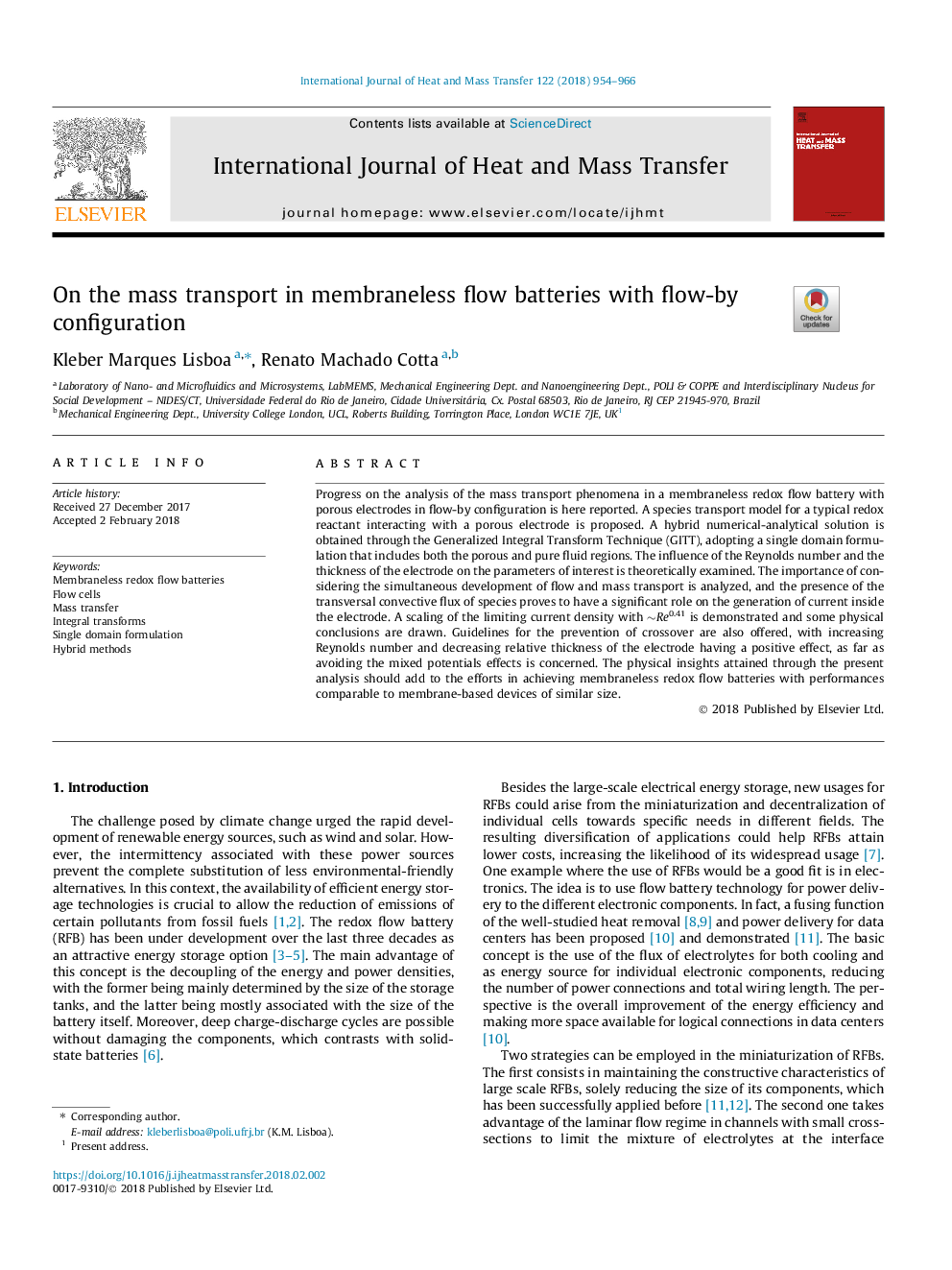| Article ID | Journal | Published Year | Pages | File Type |
|---|---|---|---|---|
| 7054445 | International Journal of Heat and Mass Transfer | 2018 | 13 Pages |
Abstract
Progress on the analysis of the mass transport phenomena in a membraneless redox flow battery with porous electrodes in flow-by configuration is here reported. A species transport model for a typical redox reactant interacting with a porous electrode is proposed. A hybrid numerical-analytical solution is obtained through the Generalized Integral Transform Technique (GITT), adopting a single domain formulation that includes both the porous and pure fluid regions. The influence of the Reynolds number and the thickness of the electrode on the parameters of interest is theoretically examined. The importance of considering the simultaneous development of flow and mass transport is analyzed, and the presence of the transversal convective flux of species proves to have a significant role on the generation of current inside the electrode. A scaling of the limiting current density with â¼Re0.41 is demonstrated and some physical conclusions are drawn. Guidelines for the prevention of crossover are also offered, with increasing Reynolds number and decreasing relative thickness of the electrode having a positive effect, as far as avoiding the mixed potentials effects is concerned. The physical insights attained through the present analysis should add to the efforts in achieving membraneless redox flow batteries with performances comparable to membrane-based devices of similar size.
Related Topics
Physical Sciences and Engineering
Chemical Engineering
Fluid Flow and Transfer Processes
Authors
Kleber Marques Lisboa, Renato Machado Cotta,
